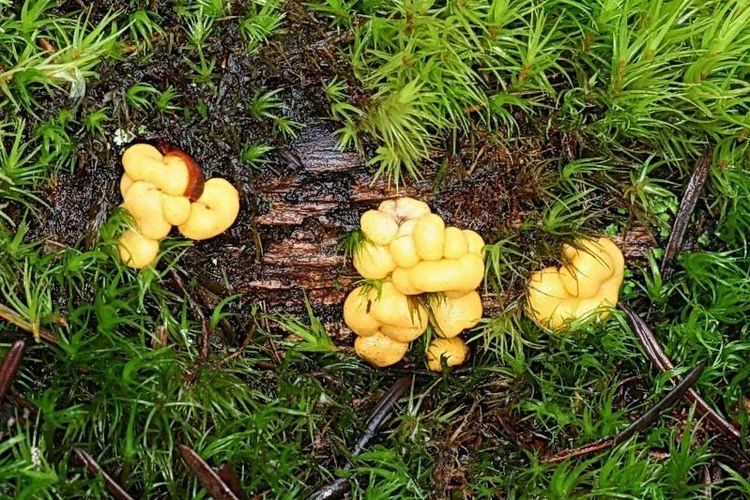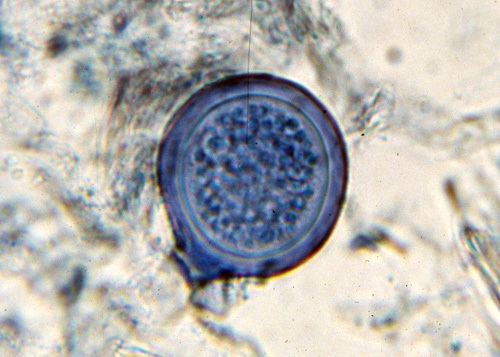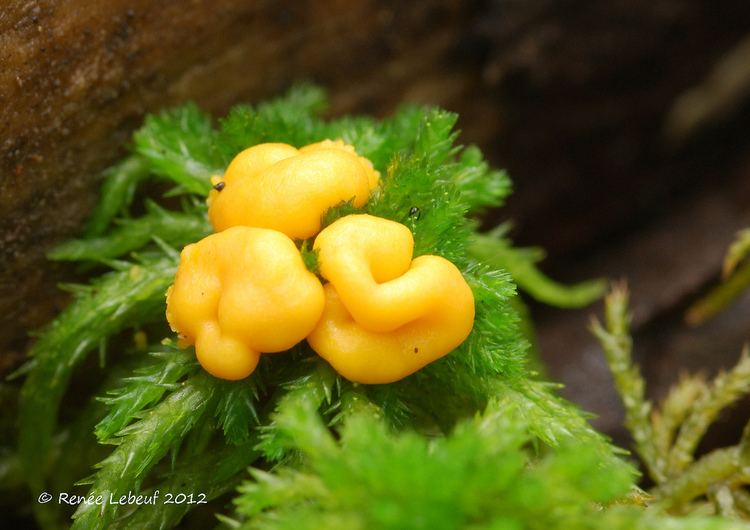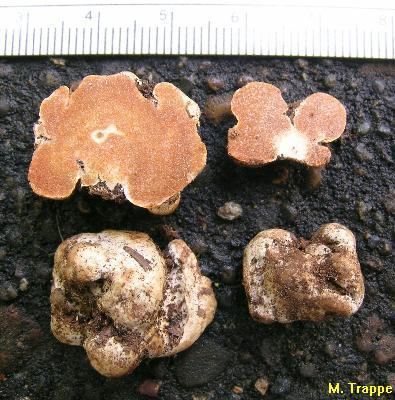Kingdom Fungi Rank Genus | Family Endogonaceae | |
 | ||
Similar Endogonales, Hymenogaster, Glomerales, Elaphomyces, Hysterangium | ||
Endogone pisiformis fungi kingdom
Endogone is a genus of fungi in the family Endogonaceae of the class Zygomycota. The genus has a widespread distribution, especially in temperate regions, and contains about 20 species.
Contents

Species of Endogone form underground structures called sporocarps—fruiting structures measuring between a few millimeters to 2–3 cm (0.8–1.2 in) in diameter, containing densely interwoven hyphae and zygospores. Sporocarps are typically found in humus-rich soil or leaf mold, or in mosses. Although most species will only produce spores in nature, the type species E. pisiformis can be made to sporulate in test tube culture when grown with conifer seedlings.

Taxonomy

Endogone was first circumscribed by Johann Heinrich Friedrich Link in an 1809 publication. In 1922, Roland Thaxter revised the taxonomy of the family Endogonaceae, recognizing four genera: Endogone, Sphaerocreas, Sclerocystis, and Glaziella. In 1935, Herbert Zycha transferred the sole species of Sphaerocreas recognized by Thaxter to Endogone. In their 1974 monograph of the Endogonaceae, James Gerdemann and James Trappe deviated from Thaxter’s concept of Endogone, which contained taxa with chlamydospores and zygospores, including only those species that formed zygospores in sporocarps. In the mid-1990s, Yi-Jian Yao and colleagues further restricted Endogone to those species that produced suspensors that were in contact with one another along the entire length. Those taxa in which the suspensors did not touch one another were transferred to a new genus, Youngiomyces.
The generic name is derived from the Greek words endo (inside) and gone (reproductive organs).
Description

Endogone species are sporocarpic—they form a fruit body termed a sporocarp, on which spore-bearing structures are borne. The zygospores—a diploid reproductive stage in the life cycle—are formed above the point of union of two gametangia, or from a budding from the larger of the two. Species in the genus can be saprobic, ectomycorrhizal, or both.
Ecology

Depending on the species, sporocarps have been noted to have the odor of onions, burnt sugar, or fish. Endogone grows in soil, on rotting wood, sphagnum or other plant material either as saprobes or ectomycorrhizal associates. Endogone is especially important in the ecology of nutrient-poor soils. For example, Endogone fungi are known to grow in sand dunes, a nutrient-deficient substrate. Dune plants are dependent upon the fungus for growth and ecological success: the mycelium of the fungus helps aggregate and stabilize the sand in a network of hyphae, giving it cohesion and helping early succession plants establish roots. It also traps and binds fragments of organic material such as decaying roots and rhizomes.
Various species of rodents and shrews include Endogone fungi in their diets, including the Southeastern Shrew (Sorex longirostris), the masked shrew (Sorex cinereus), the vagrant shrew (Sorex vagrans), the woodland jumping mouse (Napaeozapus insignis), the Siskiyou chipmunk (Tamias siskiyou), and the marsh rice rat (Oryzomys palustris).
